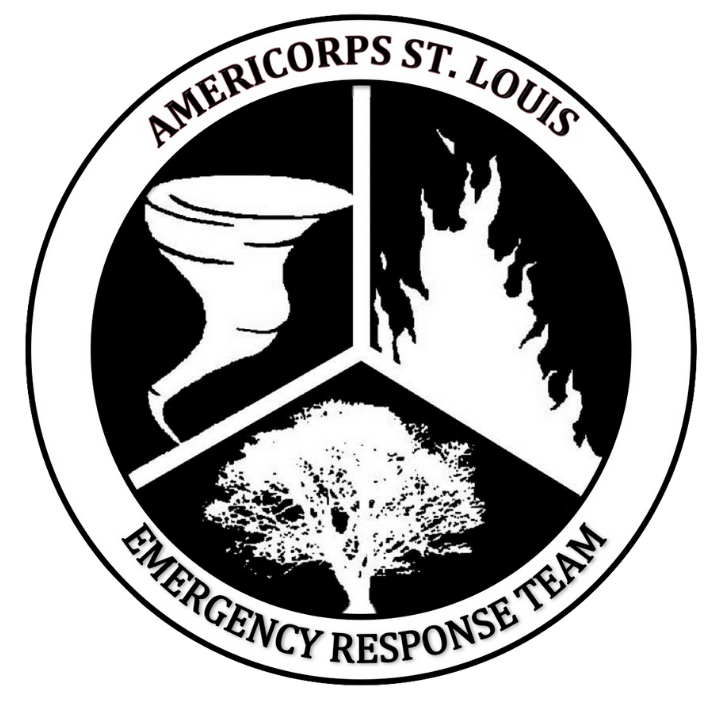
Wildland Fire
AmeriCorps St. Louis is a registered volunteer fire department with the state of Missouri. All Members complete the core wildland firefighting training through the National Wildfire Coordinating Group. Upon completion of training, Members assist national, state, and local conservation and fire agencies in all types of wildland firefighting and prescribed burning techniques.
Fireline Preparation
A fire line is a containment or control line that is either scraped or dug to mineral soil. For prescribed/controlled burns, fire lines are constructed around the perimeter of the burn unit in order to ensure that a burn does not spread further than intended. Fire lines are prepared by solidifying a marked line clear of brush and debris by using chainsaws to remove hazard trees and logs, backpack blowers to remove leaves, or other hand tools to clear the line. By preparing safe fire lines, we ensure the protection of critical natural habitats and public infrastructure as well as the safety of those performing the prescribed burn. AmeriCorps Members spend several weeks during the fall season helping prepare these burn units, so that they are ready for Missouri’s winter/early spring fire season.
Prescribed Burning
A core component of our conservation efforts throughout the year involve prescribed burning. When the weather permits, Members assist partnering agencies with prescribed burns to help restore natural habitats, eradicate invasive species, and manage the forest health. On prescribed burns, Members assist with ignition, line holding, and mop up. In our region, prescribed burns typically take place between February - April.
During our most recent prescribed burn season, Members assisted with burning over 22,000 acres across Missouri and Southern Illinois.
Wildland Firefighting
During peak fire season, when government agencies and rural fire departments with limited resources are overburdened with fire response, ERT Members offer the needed labor and expertise to protect land and homes in Missouri and Illinois. Members utilize fire rakes, pulaskis, McLeods, leaf blowers, and other hand tools to help mitigate the spread of a wildfire. Members also take part in scouting for wildfires by patrolling fire towers throughout rural areas.
While our region does not experience the large wildfire seen out in western states- dry conditions, low humidity and strong winds can still combine to create dangerous wildfire conditions. Wildfires in our region are also often started by arson, or prescribed burns that escape their containment lines.
Pile Burning
Pile burning, or burn pile construction, is another method to safely control and monitor the disposal of excess vegetation that is removed during fire line construction or habitat restoration projects. Glade restoration projects (where Eastern Red Cedar trees are removed to improve the habitat) and burn piles often go hand in hand. These are also great projects to help stay warm during the cold winter months!




